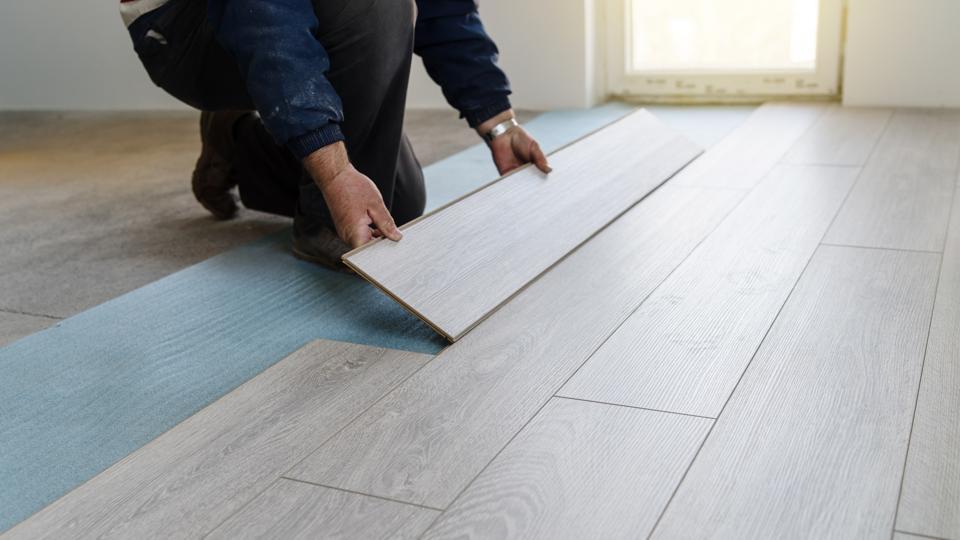There are so many reasons that laminate flooring has become as popular as it has. For starters, it’s affordable but also very durable. On top of that, laminate flooring is super attractive and low maintenance. What’s not to love?
But while laminate flooring does have a lot going for it, if you don’t install it properly, it’s not going to perform as you’d expect. So, that’s why a lot of people ask whether you need to use underlay for laminate flooring.
Many people would assume that underlayment is really only something you would use under carpet, but that’s not the case. A lot of other flooring types require this, including laminate.
Some types of laminate flooring have a pre attached underlay. But if yours doesn’t then you will need to buy a separate underlay before installing your flooring planks.
Failing to use underlay can decrease the level of comfort of your flooring as well as making it less stable. Therefore it’s incredibly important to make sure you always use it. This guide will explain the importance of underlayment for laminate flooring in more detail.
What Is The Purpose Of Underlay Under Laminate Flooring?
There are far too many people that believe you can lay laminate flooring down without any kind of underlayment. This is a rookie mistake and so many problems can be avoided by adding in this simple step. Yes, it might require more hard work and additional costs but it’s worth it as you won’t have to replace your flooring as quickly. Let’s take a look at some of the main reasons you should use underlay with laminate.
Better Stability
Laminate is what is known as a floating floor. This means that the individual boards are secured by clicking them together. Not, like many other types of flooring with things like glue or nails. While this is a hugely convenient design, it is also naturally less stable. If there are any imperfections in the subfloor then these will massively affect the overall stability of your floating floor.
By using underlay, you can counteract any problems that arise from subfloor imperfections. The underlayment provides you with a more smooth surface so that anything laid on top is equally as smooth. Moreover, the click connection between each plank will be more stable and there will be less chance of the floor shifting.
Comfort
If you’ve got laminate flooring down then this is never going to have the same soft, plush feel as carpet. Of course, a lot of people choose laminate for its low maintenance and ease of cleaning. But to make it as comfortable underfoot as possible, you can’t lay it without an underlay.
The laminate planks are, by nature, quite rigid but that doesn’t mean that putting something softer underneath won’t make a massive difference. This is especially important if the subfloor is made from a dense material like concrete.
Insulation
Let’s imagine you are installing laminate planks over a concrete subfloor. The thought of that alone isn’t very comfortable or warm. But when you install a layer of underlayment, you instantly create a more thermal environment meaning your floor is better insulated.
This is so important for maintaining a comfortable temperature within the room as it means that heat cannot be lost through the flooring. That’s great news for your energy bills, especially at a time when they’re rising so swiftly.
Sound Insulation
It isn’t only heat that your laminate underlay will keep in but it’ll also help where noise is concerned. Laminate is, compared to other flooring types, what would be considered noisy. Even the very act of walking on it can create a cacophony so it’s best to use underlay to minimise noise.
Protect Against Moisture
Most laminate flooring planks will be water resistant as they’ll need to stand up to things like spills. However, this doesn’t make them waterproof and constant exposure to moisture will cause them to swell and contract, eventually ruining the floor completely.
Moisture can seep up through the subfloor. The type of subfloor you have will determine how serious this might be. But by installing underlay, this can act as a barrier for moisture, preventing damage to your laminate flooring.
If there are serious problems with damp from the subfloor, you will need to make sure the underlay is damp proofed. This will make for a much more effective barrier and ensure that your new flooring has the longest life possible.
What Happens If You Don’t Put Underlayment Under Laminate Flooring?
Having looked at the reasons why underlayment is so important for laminate flooring, you will be able to see what could happen if you don’t use it.
In the event that the subfloor is not even, there is a chance that the laminate flooring could shift due to a lack of support from an underlay. This not only means unevenness for your floor but it will also reduce its lifespan and the floor will wear more quickly.
When this happens, the only solution will be to replace the entire floor which could see you having to spend a lot of money that you could have saved with the simple addition of underlay.
Related Article: Why Does Laminate Flooring Need To Acclimate
Conclusion
We realise that forking out for additional things for a DIY project is not something anybody wants to have to do. However, when it comes to laying laminate flooring, underlay should not be seen as an optional extra. In fact, it should be viewed as an essential and the cost should be factored in when planning your new floor.
Without underlay, your laminate flooring will not be protected from moisture and there is a high chance of it shifting. As a result of this, the floor will not last long and you’ll end up having to replace it entirely.
